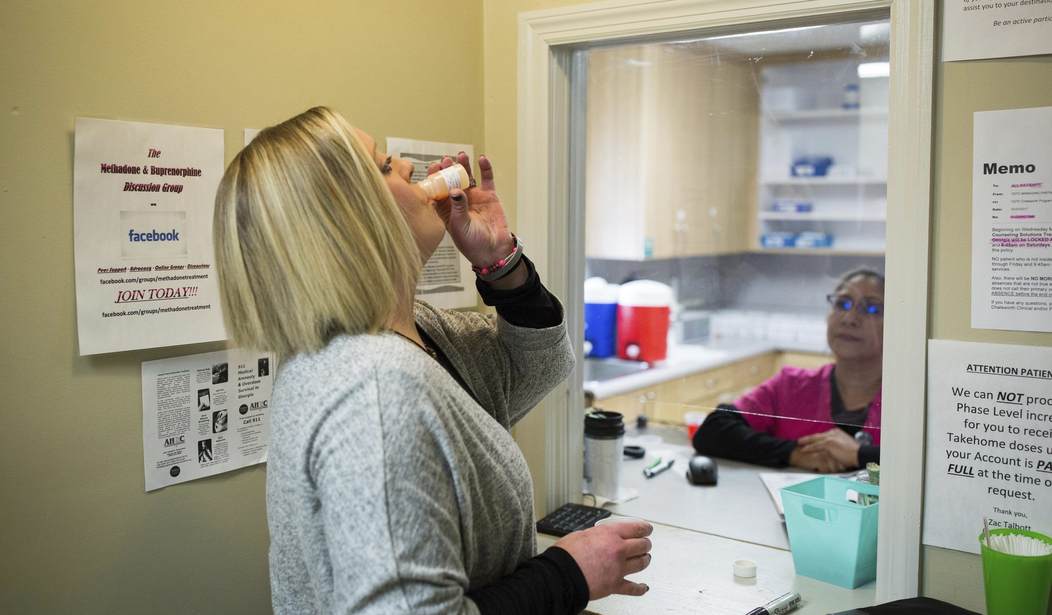WASHINGTON – Sens. Lisa Murkowski (R-Alaska) and Joe Donnelly (D-Ind.) on Wednesday introduced legislation meant to increase the U.S. addiction treatment workforce through student loan incentives.
The Strengthening the Addiction Treatment Workforce Act would make addiction treatment centers eligible for the National Health Service Corps’ student loan repayment and forgiveness program. The NHSC’s loan repayment program offers up to $50,000 for primary care, dental and mental health professionals in exchange for two-year commitments at NHSC-approved facilities.
The lawmakers believe the legislation would boost the number of nurses, social workers, counselors, psychologists and therapists at addiction treatment facilities. The NHSC focuses on improving primary care access in underserved locations. According to the lawmakers, Indiana is home to 59 counties underserved for primary care and 52 counties underserved for mental health care.
“We need more substance use and addiction professionals on the frontlines to help Hoosiers and Americans across the country battling addiction to opioids or other dangerous substances,” Donnelly said in a statement. “As I have long said, it is going to take all of us working together to effectively combat the opioid abuse epidemic, and while we are making some progress, we still have a lot of work to do.”
Donnelly previously led efforts in passing the 21st Century Cures Act, which supplied Indiana with a $10.9 million federal grant for substance abuse prevention, treatment and recovery support. Murkowski noted that many communities in Alaska are also “scarred by alcohol and substance abuse,” including many rural areas.
“Qualifying addiction treatment facilities as NHSC sites in rural Alaska will help attract and retain a well-trained addiction treatment workforce to the medically underserved areas of Alaska, enabling more Alaskans to receive quality addiction treatment services,” she said.
Jeanette M. Tetrault, an associate professor at Yale University School of Medicine who has specialized in addiction treatment for the past decade, in a recent interview called the legislation a “great start.” But she would like to see the lawmakers go a step further in providing funding to better educate professionals on addiction.
Tetrault works at an opioid treatment center in Connecticut, where intensive outpatient counseling and residential services are provided for patients struggling with addiction. She also trains medical students, residents and fellows at Yale.
“I wholeheartedly agree. There’s a national shortage of physicians, and so that’s where I think education is so vital right now,” she said, adding that the bill could go a long way in attracting healthcare providers to addiction centers, but the impact will be greater with better funding for education on medicine.
“It’s one thing to be plopped in a treatment facility, but if you don’t have the evidence-based screening and treatment algorithms at your fingertips, it can be a very challenging work environment,” she said. “And so I think this is a great start to kind of attract people to think about careers in terms of serving underserved patients who are all struggling with addiction.”
The opioid crisis has gained considerable attention in recent years as the nation has experienced an explosion in overdose death rates. According to the American Society of Addiction Medicine, there were 52,404 lethal drug overdoses in 2015, which included about 20,000 overdose deaths
linked to prescription painkillers and about 13,000 related to heroin. Based on data from various states, experts are predicting that the overdose rate could jump to 80,000 to 100,000 if the trend continues.
Tetrault said one of the most important actions should be to decrease the stigma surrounding treatment, which she said is a huge barrier for potential patients in seeking help.
“Treatment should be modeled like we treat diabetes, high blood pressure and other medical conditions, and educating physicians and providers to be able to do that. That’s what’s most important, as far as I’m concerned,” she said.








Join the conversation as a VIP Member